The Mirror of Venus
A Deep Dive into the Venus Glyph - A Key in Uncovering the Feminine Mysteries
Venus is the planet most associated with the feminine principle and in fact, its astronomical glyph - the circle with the cross below it (♀), was adopted by the 1960’s women’s movements to denote the biological female sex. However, that was not the first time the glyph became linked to the female gender. The 18th Century Swedish botanist, Carl Linnaeus is accredited as being the first to use the astrological symbols to denote the sex of plants: ♀ for female, ♂ for male and ☿ for hermaphroditic plants. But have you ever wondered why these symbols were designed the way they were? What inferences went into their design; boiling down its essence into a simplified ideogram? In the following essay, I will investigate the Venus glyph, deconstructing it and tracing its origins as far back as I can find any semblance or reasoning for the Circle and the (Greek) Cross (♀). Perhaps we may even discover along the way, the key to unlocking the feminine mysteries, albeit conjecturally.
“The Mirror of Venus” (1875) - Pre-Raphaelite painting by Sir Edward Burne-Jones depicting a group of women, including Venus, gazing at their reflections in a pool
IN THE BEGINNING…
Above Diagram via CBS News : The thirty-two signs depicted above in this typology are the main abstract shapes created by early humans living in Europe during the Ice Age (10,000 to 40,000 years ago). There are distinct patterns across space and time for each of the signs, suggesting that they were part of a system - possibly one of the oldest systems of graphic communication in the world. (Genevieve von Petzinger).
Symbols are far more than just unpretentious pictographs. But, contained within them are the representations of complex systems of thought associations and beliefs. Symbols can be overlayed, substituted, transferred, erased, coalesced, distorted, and mis-appropriated, but only a few emerge as primordial and universal to all of humanity. When I am trying to understand the modern day man, I try to go as far back in time as I possibly can, to find evidence of human consciousness, in order to locate the seed that began it all. As you will see in the above diagram, the circle and the cruciform (cross) are among the oldest used by early man, and not limited by geography. For sure, we may never truly know how they used these symbols and why, but we can hypothesise the connections they perhaps made between themselves and their environment, so much so, that they felt compelled to etch it into stone or bone somewhere. In this regard, we are probably not that different to our early ancestors, as the word glyph is derived from the word carving, and how often did we have the urge, especially in our youth, to carve into a tree, rockface or scribble on a monument to record our names or some other message we felt the need to leave behind.
The circle today is perceived as a feminine symbol, in fact in genetics they use the circle (○) to denote biological female. We can probably draw many correlations between the circle and the woman; the overall rounded nature of a woman’s body:- the soft curves of her hips, her breasts, the defined circular areolas surrounding her nipples, and of course the globular shape of her belly as it transforms during pregnancy. Thus, the womb is by far among the most popular connotations made with the circle. The circle is echoed in the planets, the opening to a cave, the megalithic stone circles, circular hearths and ideas such as cyclical time and philosophical concepts such as chakra systems (the Sanskrit word for Wheel or Cycle), the ouroboros or samsara (the Buddhist concept of birth-death-rebirth as represented by the Bhavachakra - Wheel of Life). Curiously, Venus has the most circular orbit among the planets in our solar system, the others, including Earth, have elliptical orbits around the Sun.
I imagine our early ancestors lived at the mercy of the elements of Nature; to the weather, the terrain and the creatures that surrounded them. It became imperative for their survival, to work out a way to potentially divinate and interpret the omens as they appeared, thereby bringing order to the chaos of unpredictability. So began our observation of the sky-to-earth relationship among the luminaries, the stars, the meteorological conditions and the physical changes expressed on earth via the plants, animals and the female body. As they monitored, patterns began to emerge and correspondences especially between the woman’s body and Nature became more obvious. The woman’s body clock kept record of the seasons and time. Eventually, specific qualities developed, often taking the form of totemic animals, anthropomorphic representations, and ultimately coalescing into the mnemonic and archetypal lore of spirits or deities, and their corresponding ceremonial rites to hopefully appease them and maintain the order.
This illustration above shows what’s called the 5 petals of Venus. It shows a simplified geocentric – Earth-centered – plot of the orbit of Venus over 8 years, from 2016 to 2023. Image and article via Guy Ottewell.
The cross symbolism is much older than Christianity and much of the primeval meaning encoded has no doubt been corrupted over time. The cruciform is essentially 4 lines intersecting at the same point; that point being the fifth point, the quincunx. Five has strong connections to Venus, as the 5 synodic cycles of Venus, in relation to its cosmic dance between the Earth and the Sun actually form a pentagram. We also find the 5 encoded in the Mayan Lamat glyph which they used to identify Venus which was often depicted on a turtle’s carapace / shell.
The Vitruvian Man (c 1490) by Leonardo da Vinci
The image of a turtle is a reoccurring one that we find in various creation myths across the globe and even today we find it baked into the Taoist cosmology and geomancy practice of Feng Shui via the Bagua. The Bagua consists of eight trigrams which were traditionally carved onto turtle shells and used for divination. Symbolically the carapace is the surface of the earth, and it’s four legs denote the 4 world-quarters, whilst the head-to-tail line represents the Axis Mundi. If you thought the turtle carapace of the Mayan Lamat glyph an unusual connection to Venus, then you could imagine my surprise when I discovered there is a replica of a much older statue of Aphrodite, with her left foot standing on a tortoise, located in the Louvre Museum today (Refer to image below).
Above is the Mayan Lamat Symbol for the “Great Star” which we know today as the planet Venus. The Lamat glyph is within the cruciform trope but in its case, the centre point forms a lozenge (yoni) shape.
Meanwhile back in ancient Mesoamerica, we find the iconography of the Great Star on war shields and headdresses, as they correlated this Great Star to warfare and sacrifice. Interestingly, many other cultures too, had perceived Venus, in her Morning Star phase, as the expression of the warrior archetype and usually a signal of times of conflict and war.
No doubt our ancestors were observing Venus long before the first written records appear of her in the Sumerian clay tablets. But the oldest name we have for the personification of the planet was Inanna, the Mesopotamian Goddess of War, Love and Fertility, with her primary title as “Queen of Heaven”. The cult of Inanna seemed to have been spread and absorbed into the deities of other cultures and so we find iterations in Ishtar, Ninsianna, Astarte, Aphrodite Ourania, Hera, Venus (Roman Goddess namesake), Hathor, Isis, Osiris, Frigg, Quetzalcoatl and more recently the Virgin Mary and Jesus Christ.
The Sumerian myth "Descent of Inanna into the Netherworld" is the oldest written record of a story of death and resurrection. It records Inanna’s journey to the Underworld in order to seek forgiveness for her part in the sacrificial death of her sister, Ereshkigal’s husband - Gugalanna (the Bull of Heaven). After 3 days spent in the underworld hanging on a corpse’s hook, she returns to the land of the living, but only on the condition she finds someone else to replace her. We find numerous myths echoing this storyline:- Osiris descent into the Underworld and resurrection by Isis; Persephone and Demeter; Jesus Christ and Mary Magdalene, Quetzalcoatl, and Odin hanging from the World Tree Yggdrasil.
We begin to see a pattern emerge with Venus, one that revolves around the mysteries of death. Even for the Aboriginal Yolŋu people of north-eastern Arnhem Land, Venus is identified as Barnumbir, the Star held by two women on the Island of the Dead, with the belief that the planet guides the crossing over of the spirits to the afterlife. At this point, many questions arise:- Why is the planet Venus associated with a type of death linked to resurrection? Could this be in reference to the disappearing phases of Venus, as she transitions from Evening Star to Morning Star? Is this trope of mythology actually speaking about a physical death and rebirth, or in shamanistic terms a soul retrieval type of death?
Revelation 22:16 “ I, Jesus, have sent my angel to testify to you about these things for the churches. I am the root and the descendant of David, the bright Morning Star."
The sculpture is a 3rd-century CE marble statue of Aphrodite with a tortoise, found in the Temple of Artemis, Dura-Europus, Syria, now in the Louvre Museum. It depicts Aphrodite with her left foot resting on a small tortoise
Today we have expressions like “X marks the spot” and “crossing over” and perhaps that was exactly how our ancestors used the cross, to locate a place, or a point of transition, for the cross also forms a bridge to the 4 cardinal directions. It may be that the precursor to the cross is found in the menhirs, or the large standing stones we find at crossroads or grouped in circles. What is interesting about these megalithic standing stones is what we don’t see above the surface. These upright stones have been discovered to be buried deep in the earth, sometimes half their entire length. This then leads me to perceive the menhir as the vertical axis intersecting the horizontal axis of the earth’s surface. Arguably, we could say trees were our first crosses, or marking posts, with their roots also anchoring them deep into the earth like the menhirs were buried. You can find a deep dive on the Tree of Life symbolism in my previous post.
Above is the Sumerian symbol of the “ring-post” used to identify Inanna as a pillar. The pillar was made from bundles of reeds, which they coiled the tips of the bundles around into a spiral pattern. This reminds me of the Golden Ratio which is also encoded in the planet Venus synodic cycles as well as the coiled hairstyle reminiscent of Egyptian portrayals of the goddess Hathor.
Above diagram is the Kabbalistic Tree of Life - the Sefirot, courtesy of Wikipedia which I’ve overlayed with the Venus glyph.
Curiously though, the Venus Glyph can be perfectly overlayed onto the Sefirot as proposed by Mario Garza of Symbolic Studies. The circle of Venus, which previously we have associated with the symbol of the womb, contains within it the hidden sefirot - the Da’at, not to be confused with the Egyptian Duat (𓇼). The Da’at or Da’ath is perceived to represent the location or a mystical state where one encounters hidden knowledge. It is not considered a sefirot in itself, but that which contains all 10 sefirots united. The Da’at is the concealed middle axis in the Tree of Life, acting as a bridge or portal between the divine and earthly realms, channelling the creative life force into existence. On that basis, I personally interpret the Da’at as the womb that brings in the soul consciousness, fills it with life force and ultimately incarnating it in the flesh. The Da’at is sometimes compared to being a key (that opens all 6 chambers (attributes) of the heart), reminding me of how much the female reproductive organ resembles a keyhole shape; the womb connected by the passageway, which ultimately is the key to generating life. The aspect of conceiving life in a womb can be compared to a liminal space, for the foetus lies between worlds of sorts, somewhere between the spirit and earthly planes, whilst still contained within the walls of the endometrium of the mother.
We can see how the planet Venus as humanised through the Sumerian Inanna or the Egyptian Hathor, formed the template for Christianity’s Virgin Mother Mary, sometimes also referred to as the Queen of Heaven. Sounds familiar? Among the symbols that have come to identify Mother Mary, is the rose, which as we saw earlier, the path the planet Venus traces over 8 years is a 5 petaled rose. Another coincidence we find with the planet Venus in her representation across cultures, is her association with a garden. The rosary, another icon of the Virgin Mary, finds its root in the Latin word “rosarium”, which translates to “rose garden” or “garland of roses”. Could this be alluding to the shape of the rose that the planet Venus makes in relation to the Earth and the Sun? Surprisingly or maybe not, the rosary mimics the shape of the Mirror of Venus glyph. So, could we actually be observing the path Venus makes, as we pray the rosary? But that is not the only way that Venus seems to be commemorated by the seemingly patriarchal Christian Church, as I find similarities in the outline of the St Peter’s Basilica at Vatican City.
St Peter’s Basilica could be overlayed onto the Sefirot and the ♀
A Tsaatan shaman wearing a toli (mirror) hanging from her neck; Khövsgöl Province, Mongolia via Wikipedia.
MIRROR, MIRROR ON THE WALL…..
For thousands of years the mirror has been associated with magical practice. One can trace its use in the oldest spiritual tradition - Shamanism. Archaeological discoveries of some of the oldest shaman remains found were of women, always buried with mirrors alongside them. The earliest mirrors were made from obsidian but perhaps even before that, they may have used shallow bowls or trays of water as sources of reflection. Even in more modern times, one can still encounter Siberian and Korean shamans wearing either a necklace of mirrors or mirrors attached to their belts, as they were often perceived as mystical instruments, both for scrying and protection. Mirrors were thought to absorb and deflect any negative entities and possibly act as portals to other realms. Similarly, we find this belief alive today in the practice of Feng Shui with the auspicious use of the mirrored glass in sky scraper buildings or the avoidance of mirrors placed in the bedroom, particularly when in line with the bed.
In the psychological landscape, mirrors are often symbolic tools for soul reflection, and in separating one’s identify from their quintessence. In fact, the ancient peoples believed the reflection seen in the mirror was the visible aspect of the soul. Hence, the folklore that developed around soulless creatures like demons, werewolves and vampires having no reflection in mirrors, because they have no soul reflection.
The Mayans and Aztecs placed a mirror next to the corpse, as did the Egyptians leave a mirror in the coffin in front of the deceased’s face. As we know, many ancient cultures held a belief in the afterlife and as such, buried one with all the things they owned in this life, which they may possibly also need in the next life. Perhaps the mirror in this case reiterated the belief that the afterlife was a mirror image of life on earth and as such held a deeper symbolism than to peer at one’s own image and likeness.
This mirror of Princess Sithathoriunet is a masterpiece of Middle Kingdom art. The mirror itself is made from silver, while the handle is of obsidian. The handle takes the form of a papyrus stem inlaid with gold ending with a double sided face of the goddess Hathor. Photo: Sandro Vannini
Another of Hathor’s emblems is the Sistrum (musical instrument described as a rattle); Credit The Egyptian Museum, Cairo
We find the mirror an emblem that links many of these deities associated with the planet Venus, so much so that many claim the mirror to be the template for the Venus glyph. From artistic depictions of Aphrodite holding a mirror to her face to the pre-dynastic Egyptian goddess Hathor. Hathor (the Cow-Eyed) was a parthenogenetic mother goddess often described as the Queen of the Waterways of the Milky Way, which was thought to be the Nile in the Sky. Hera, the Greek manifestation of Hathor, also known as Cow-Eyed, legend has it formed the Milky Way when she pulled her breast away from the infant Heracles, spraying her breastmilk across the sky. Curiously, Venus seems to have strong bovine connections, from Inanna’s sacrifice of the Bull of Heaven to ruling the Taurus constellation which is perceived to lie within the Milky Way galaxy, on its galactic plane. Could the planet Venus’ taurine association be in reference to the observance of certain agricultural seasons for cattle rearing? For instance, the Buryat (a nomadic pastoralist tribe) revere Venus as the heavenly shepherd, leading his flock of stars. Coincidently or not, we find many references to the afterlife being described as a “field”, be it the Greek Asphodel Meadow, the Elysium Fields or the Field of Reeds for the Egyptians. Could the idea of a field be rooted in agricultural mythos and beliefs; whereby a field is both planted (birth) and reaped (death), to repeat again and again in cycles?
The First Intermediate Period stela of Tetu, now in the MMA. Beneath the chair of his wife, Nefertjentet, is a hand mirror painted yellow in imitation of gold. Image: HW
The Egyptian symbol for the Ankh as the Key of Life (Cross of Life) bears some resemblance to Hathor’s mirror
The Egyptian word Ankh is a homonym for the word mirror and the cross of life. How coincidental they also look quite similar. The Ankh is described as the key to the gates of life and death, encompassing both the mortal existence and the eternal afterlife. Predating the Ankh, is the Tjet (pronounced Teet) or Knot of Isis, which many perceive as the original template for the design of the Ankh. The Knot of Isis, also known as the Girdle of Isis, the Buckle of Isis, or the Blood of Isis has been interpreted by some to be the literal menstrual cloth, often carved into red jasper as an amulet for protection. The very symbolism of a knot also conjures up the notion of binding and releasing in magical practice but, sticking with the theme of female reproduction, the concept can also apply to tying a knot on the umbilical cord. I also see some similarities between the shape of the Tjet and the uterus. In fact, when a woman is close to full term pregnancy, the horn like fallopian tubes fold down the sides of the womb much like we see in the Tjet (see medical teaching diagram below).
Tjet/ Blood of Isis/ Knot of Isis.
Above is a set of 9 models demonstrating the Embryonic and Fetal Development via Eisco Labs.
Notice how in the last trimester, the fallopian tubes have folded down like the folds in the Knot of Isis, where the loop represents the foetus in the womb.
Like we saw with the Sefirot, the Venus glyph ♀ can also be overlayed onto the Ankh, Hathor’s Mirror, the Knot of Isis and even Hathor’s Sistrum. Are these symbols all actually alluding to the female reproductive organs as generators of life in the cycle of death and rebirth? Is this why the planet Venus and her personification through various deities is linked to the concept of fertility?
The Cycladic Venus “Fry Pan” Pregnancy Calendars
The Mayans were without a doubt, one of the ancient civilisations that meticulously studied the movements of Venus and identified the Morning and Evening Stars as belonging to the same celestial body, as did the Australian Aboriginal peoples. What remains of their knowledge of Venus can be found in the Dresden Codex, which included detailed Venus tables tracking its 5 synodic (584 day) periods - the equivalent of 8 solar years, which ultimately influenced the development of the Mayan Calendar system and their ceremonial sacrificial traditions.
An ancient Mayan Text called the Dresden Codex contains detailed recordings of the phases of Venus in its Venus Table, on pages 46 to 50. Data in the Venus Table may have been gathered by astronomers to help time ritual events with the cycles of the planet. (Image credit: Bruce Love)
However, it seems the Mayans weren’t the only ones to devise a calendar system mapping Venus synodic periods. It is claimed by some researchers that the early Bronze Age (4400 to 2000 BCE) artifacts known as the “cycladic fry pans” were actually calendars tracking the synodic periods of Venus, Mercury, Mars and even Jupiter. There have been over 100 of these cycladic fry pans found mostly concentrated across the Cycladic Greek Islands and a few on the mainland. Most have been uncovered in burial grounds and sometimes in town dwellings. These “fry pans” are no cooking utensil, but have been up for debate as to their use, with some researchers believing they may have been used as mirrors, if filled with a liquid like water, oil or blood. However, I am of the opinion that they were used as a synodic calendar by a niche of people in their local communities, perhaps the more learned, wealthy or even midwifes, as you will soon find out why. I am not about to explain all the mathematical calculations that were reflected in the majority of these fry pans, as this research paper has done a brilliant job in presenting their case for a pregnancy and birth predictor calendar. However, I will point out a few interesting symbolic details noted on the fry pans that majority of which seemed to track Venus. The Venus cycladic fry pans can be differentiated from those that tracked Jupiter, Mars and Mercury by the shape or design etched into the handle, being either forked as in the image below (Item 5153), or with female genitalia by way of a pubic symbol pressed into the handle. Also interesting, is how the researchers correlated the 8 ray (Macedonian) star or 8 spirals to the 8 solar year period (Oktaetiris). The Oktaetiris period happens to coincide with the two Olympic periods within a Venus cycle. Coincidently, the 8 pointed star is one of the symbols of the Sumerian goddess Inanna. Meanwhile, the 5 rayed star motif could relate to the 5 synodic periods of Venus in the 8 solar years.
Above is the frying pan from Chalandriani, Syros Island. Notice again the 8 rayed star in the middle which probably represents the 8 year period which corresponds to 5 synodic periods of Venus or 99 lunar months, two Olympiads. At the Olympics, the olive wreaths presented to the winners, were brought from the Temple of Hera, who as we discovered earlier is also closely associated with the planet Venus.
Definition: Synodic Period is the period it takes for a planet to reappear in the same or approximate position (give or take a few degrees) with respect to the Sun, from a geocentric perspective. One synodic period of Venus is 584 days long, of which 263 days the planet appears as the Morning Star and 263 days as the Evening Star. There are periods of invisibility namely 50 days after the Super Conjunction and 8 days after the Inferior Conjunction.
The phases of Venus as both the Morning Star and Evening Star are each 263 days in length, which coincides with the human gestation period. If what these researchers have presented here about the cycladic fry pans used as potential birth predictors or pregnancy calendars, it can be ground breaking in many ways, if widely accepted by Academia. This would also shatter the belief that the Greeks did not perceive the Morning Star and Evening Star as two separate celestial bodies as is currently perceived. Above all, the period in which these cycladic fry pans existed, would place these synodic calendars as the oldest known calendar of Venus, far older than the Mayan astronomers’ Dresden Codex. We also cannot deny the uncanny resemblance of the cycladic fry pans to the mirrors often accompanying many of the Venusian deities. It sure does make one wonder, was the goddess in fact carrying a mirror or a synodic calendar?
To conclude, the Mirror of Venus (♀) seems to be more than a trivial vanity mirror that one would use to adorn themselves with cosmetics. In fact, the word cosmetics is derived from Greek kosmētikos, from kosmos ‘arrange or order or adorn’. The idea of a cosmology was a means to bring order to a world of chaos. Suddenly, the mirror seems to be a more profound instrument in distributing that order. Today, we all carry a black mirror in the palm of our hands, a device, when not in use, appears like an obsidian black screen. Makes you wonder, doesn’t it?
As we’ve discovered throughout this essay, the Venus glyph (♀) perfectly embodies both the container and the bridge within the spectrum of life and death; beauty and war; fertility and sacrifice. The Venusian planet - her myths and cycles all seem to encode the feminine mysteries. What do you think?
Feel free to comment below any other correlations you’ve come across in the symbolism of the Venus glyph, as I’d love to hear your thoughts!







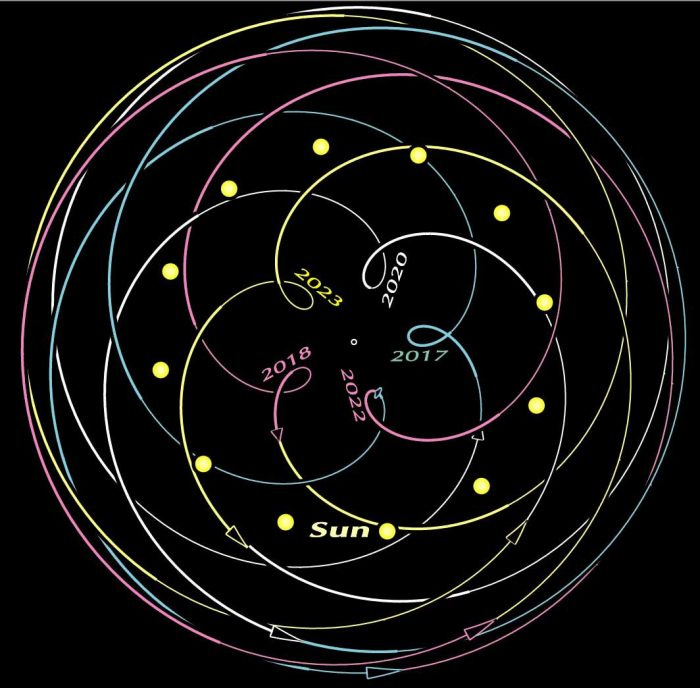
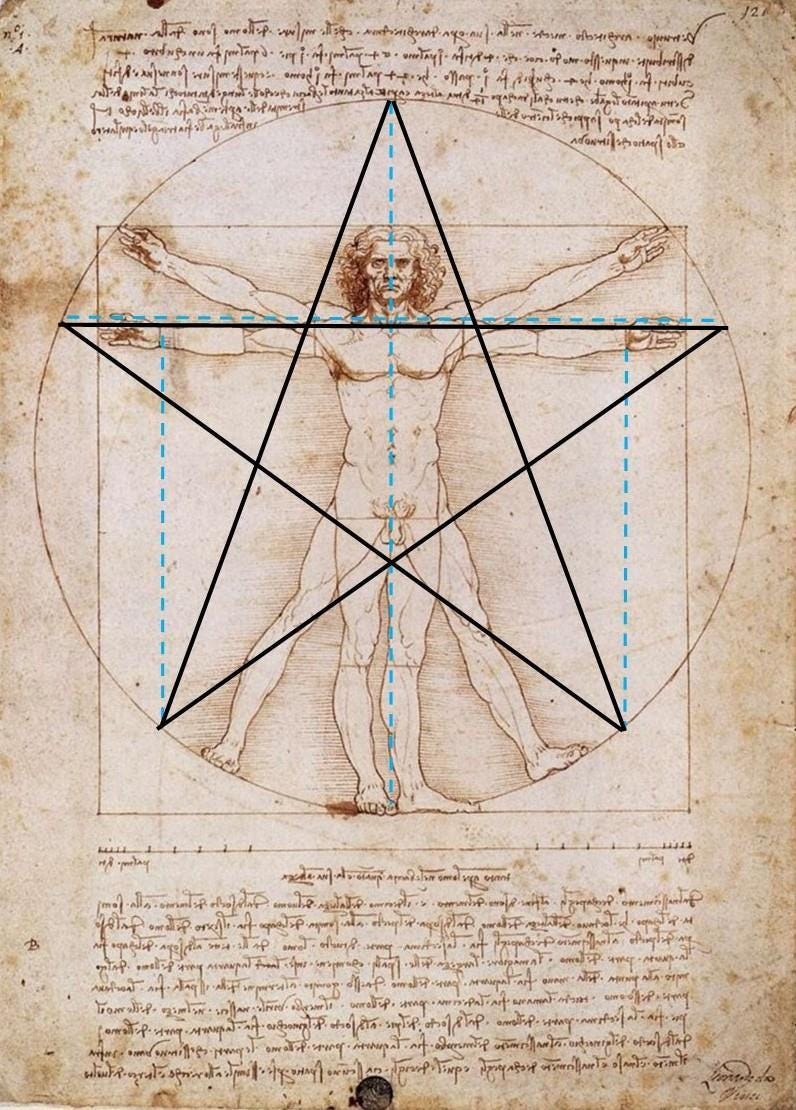
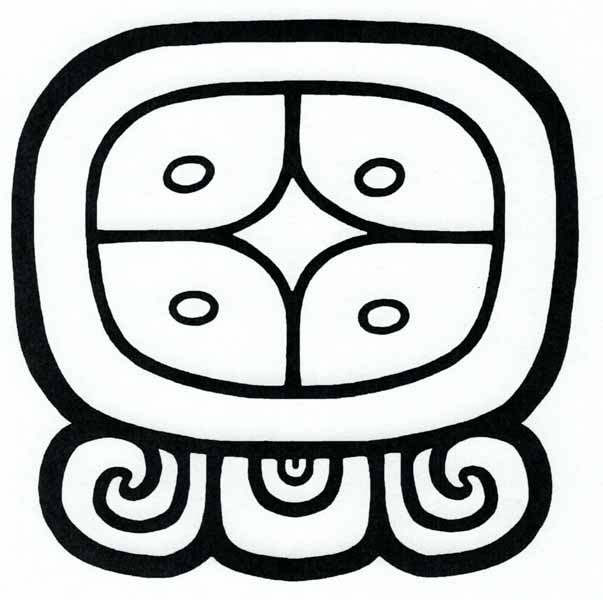

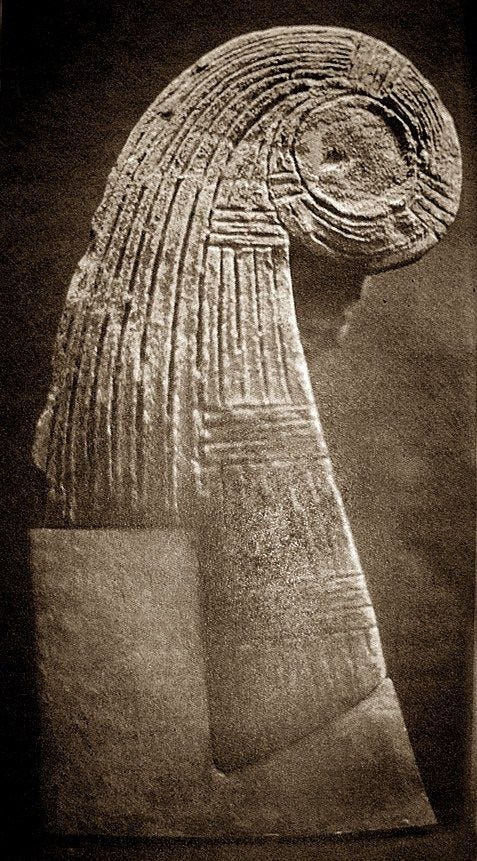
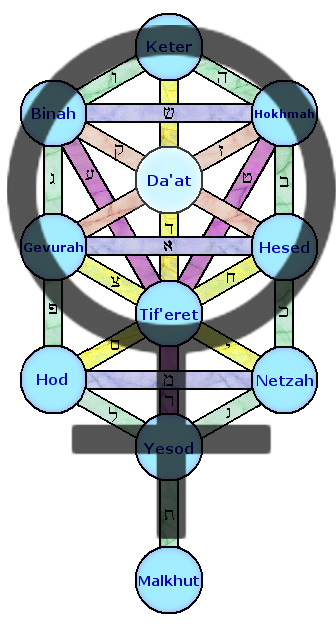

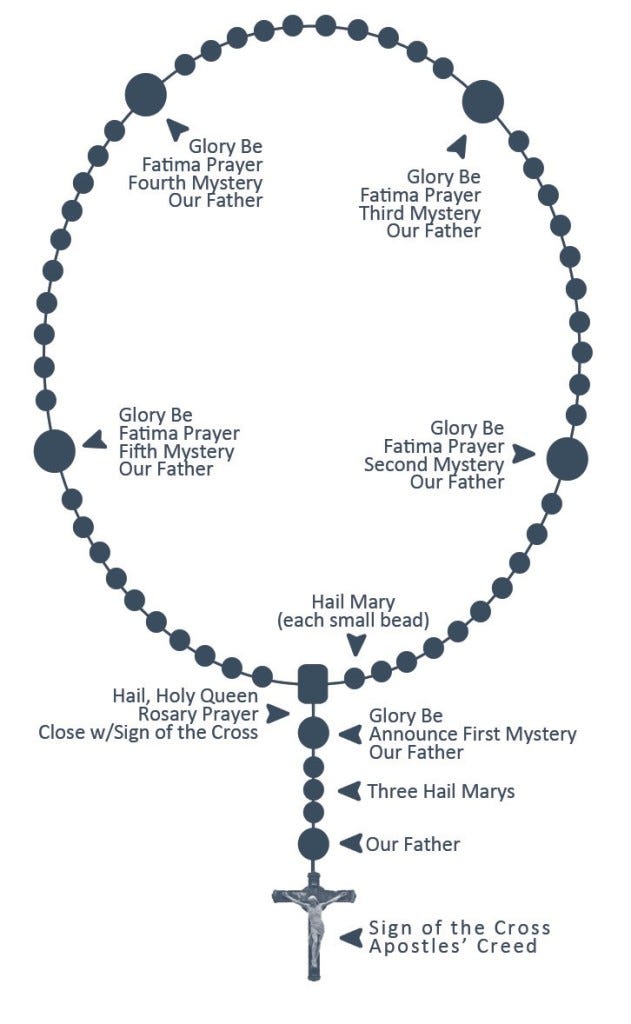
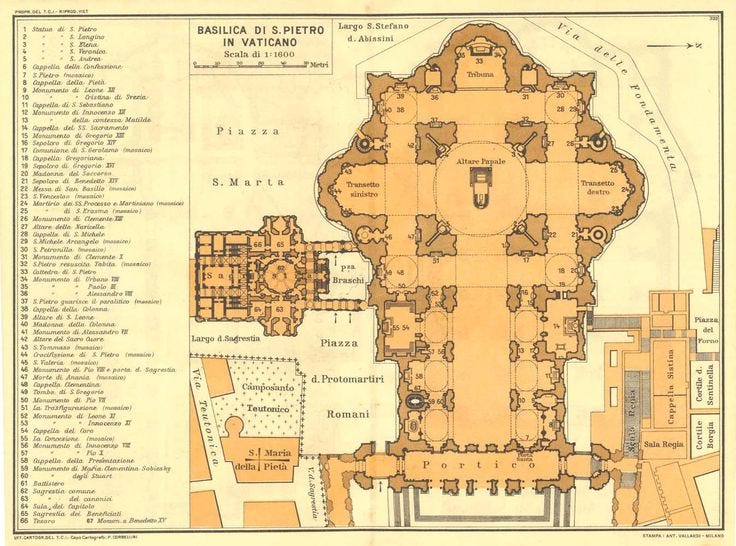


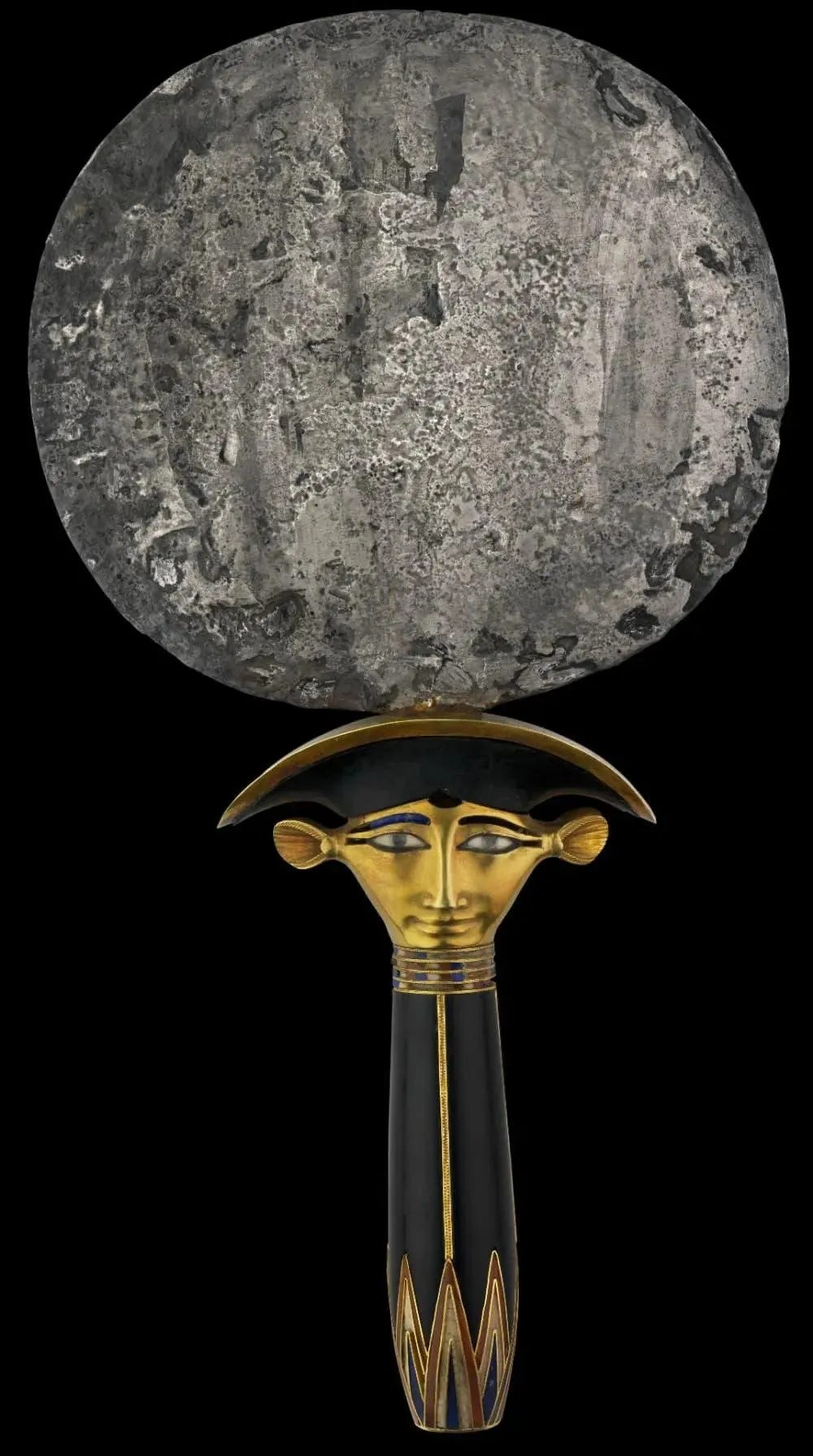
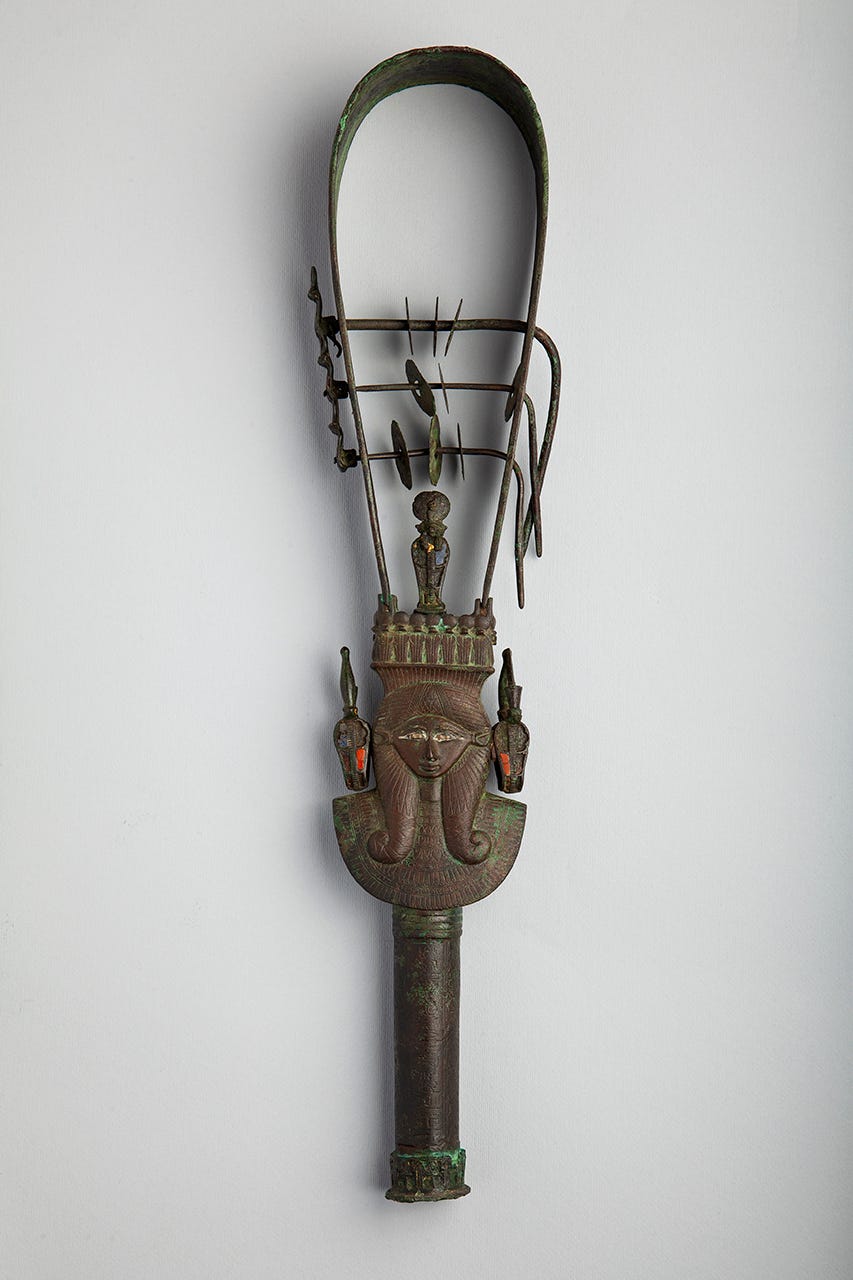

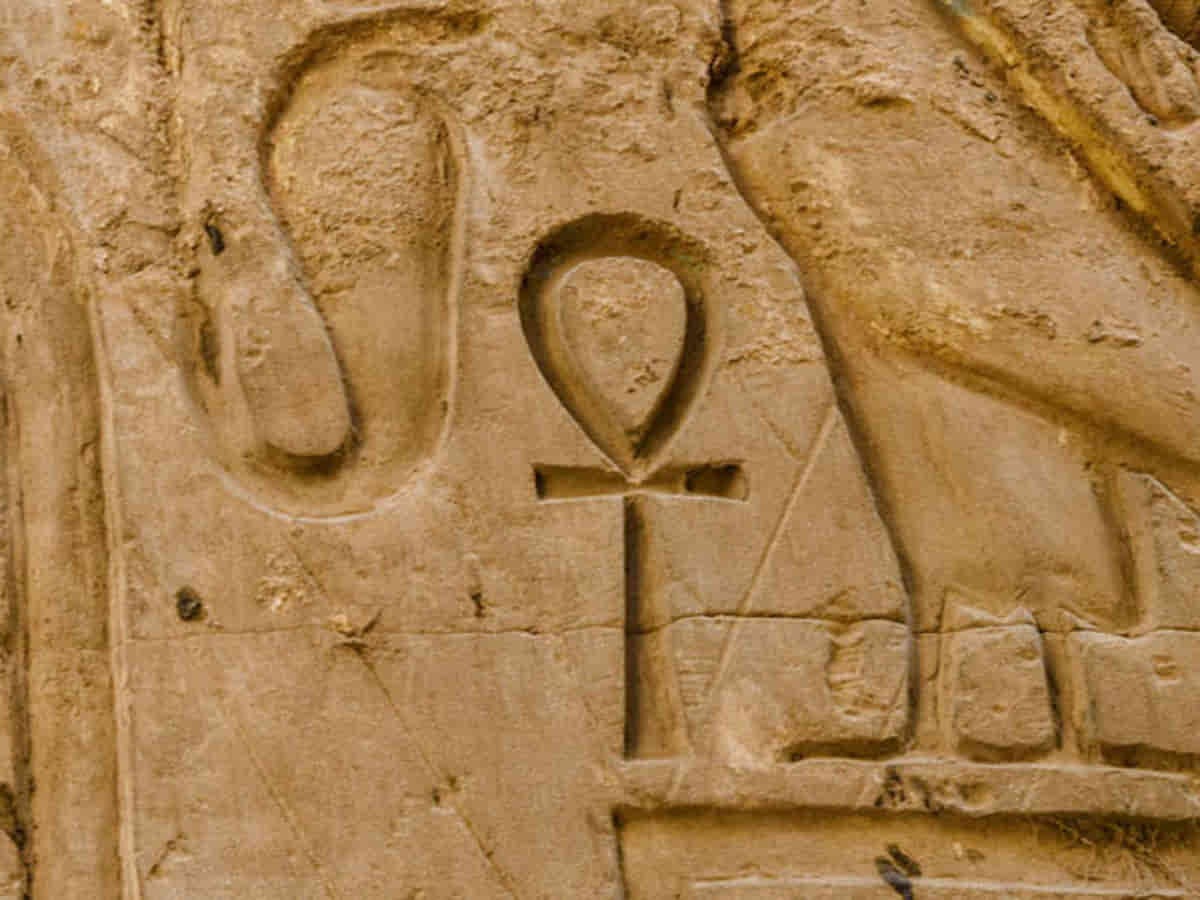


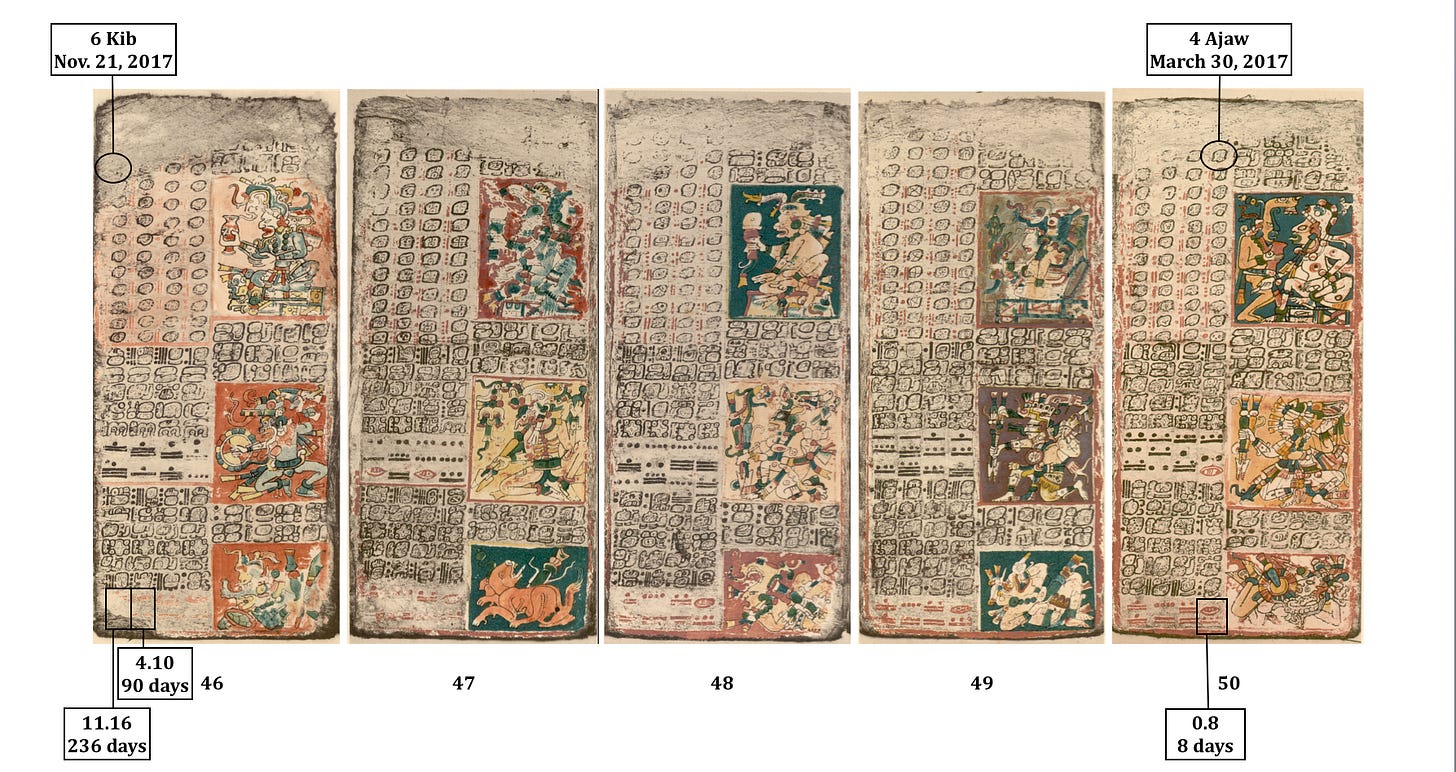
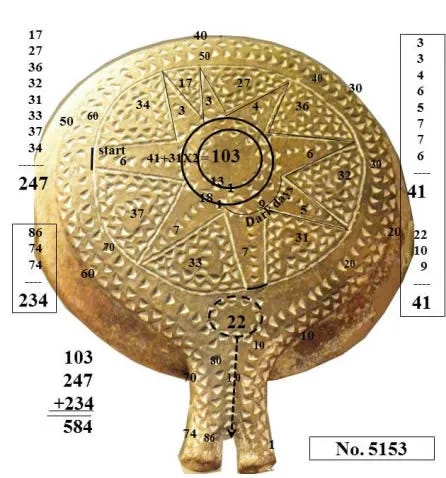
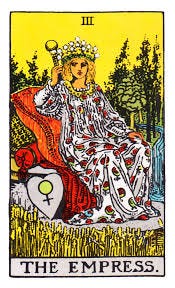
Super interesting article with a lot of input, I didn’t know that there was a correlation between Venus and the turtle, and I loved your connection to Bagua and the mythic turtle of Chinese cosmology.
There is also a fascinating aspect about mirrors you mentioned, since reflection always seems to indicate a depth from another side — in the ancient indigenous civilisation of the Taiyrona, the Kogi descendants use a bowl of water for their oracle, and they watch how bubbles surface on the water to interpret messages from the mother.
And last but not least, your beautiful gallery also made me think of the archetype of a carrier bag — which is also a big symbol in the Kogi culture, a bag woven by women with a distinct sling. The idea of this type of sling is also a symbol for the heart and womb in the ancient Chinese worldview, in fact, one of the characters for womb consists of the radical for moon and the radical for bag!
So much feminine mystery laid out here. I’m excited for more. I’m interested in Feng shui and geomancy more, and its connection with Venus. I might have to read that part again and contemplate. This is the second time in a week it’s been brought to my attention by other women. This and a conversation with a friend about geopathic stress and the ways an environment is impacting us and vice versa.